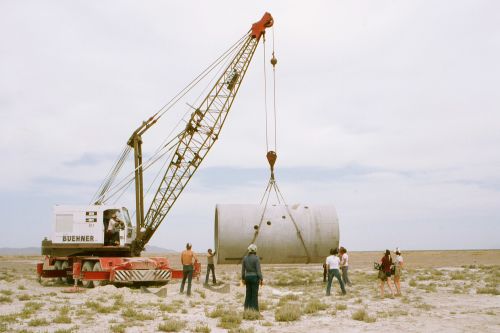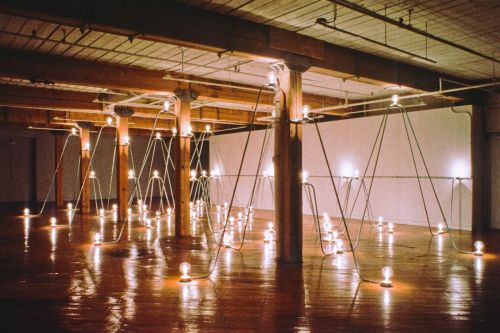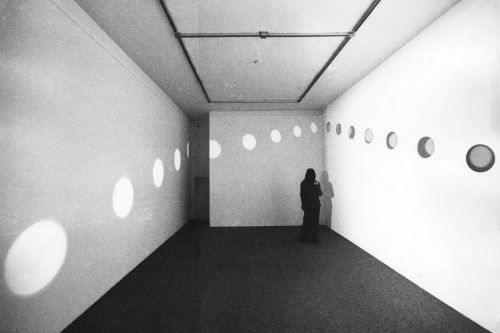Born in Worcester, Massachusetts, Holt grew up in New Jersey. She graduated from Tufts University, where she majored in biology. Upon graduating in 1960 she moved to New York City and became a vital part of the city’s network of genre changing artists. Her first group exhibition was Language III at Dwan Gallery in 1969, her first solo at l0 Bleecker Street in 1972. Numerous exhibitions, screenings, and commissions followed.
From her earliest works Holt was attentive to language as a system structuring our understanding of place. In the mid-1960s she was an assistant literary editor at Harper’s Bazaar and in 1966 began creating concrete poems. In the ensuing years she extended her language explorations from the page to the landscape, as well as to photography, film, video, and audio. Holt extended this focus to trace in her artworks the systems of the stars, the functions of the built environment, and human mapping of landscape.
Photography was an essential medium. Trail Markers (1969) and California Sun Signs (1972) use seriality to create visual poems, while Sunlight in Sun Tunnels (1976) and the Light and Shadow Photo Drawings (1978) turn to ever-shifting light cycles. In 1971 Holt started her Locators, sculptural “seeing devices” comprising T-shaped industrial piping to be looked through with one eye. Drawing attention to visual perception and place, the Locators first focused on views from and in her studio, expanding into the landscape and, with the landmark Sun Tunnels (1973–76), to astronomical time. Located in Utah’s Great Basin Desert, Sun Tunnels comprises four concrete structures arranged in a cross formation, positioned to frame the sun as it rises and sets during the solstices. Perforations in the tunnels follow the constellations of Draco, Perseus, Columba, and Capricorn, allowing light projections to be cast inside.
Whether emanating from the stars or plugged to electricity grids, the perceptual qualities of light fascinated Holt. The room-sized installation Mirrors of Light (1973–74) materializes light reflections and brings awareness to the body in space through the careful positioning of mirrors, a theatre spotlight, and the perceiver. In the 1980s Holt’s exploration of systems moved to the built environment with her Systems Works, sculptures connecting to usually unseen internal architectural organs. Electrical System (1982), for example, comprises more than a hundred light bulbs connected to the museum’s power system which Holt described as being “part of open-ended systems, part of the world.”
Investigations of light and systems continued at a larger scale in Holt’s outdoor sculptures. Many, but not all, of Holt’s sculptural ideas were realized. Consistently she used drawing as a medium to think through and articulate sculptural thinking. Her works on paper range from careful detailing to mathematical calculations and full renderings.
In 2014, Nancy Holt willed the Holt/Smithson Foundation into being. The artist-endowed foundation is dedicated to the art and ideas of Holt and her husband the artist Robert Smithson and will continue to develop their distinctive creative legacies.























































































































































































































